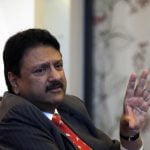New research is aiming to show the economic impact of Australia’s creative industries, hotspots for jobs in that sector, and what makes a particular area a hub for creative jobs.
“What we’ve done over the last probably 15 years is pulled the (creative industries) bits out of different parts in the national statistics, put them together in a defensible way and shown that the creative economy is much larger – and indeed is growing at a rate that is significantly higher – than the economy as a whole,” Queensland University of Technology Distinguished Professor Stuart Cunningham said.

“We are intending to do that again with the Census 2016 data.”
Professor Cunningham said the researchers had strict definitions of what counted as a creative occupation, and they included the arts industries, the media, architecture and design.
“If you put them all together, you have an economic size that is far greater than people think of when they think of creatives,” Professor Cunningham said.
“Our data talks about growth rates, and in the digital creative industries … the growth rate between 2006 and 2011 was 4.8 per cent which was more than twice the economy as a whole.”
With the help of a $480,000 grant from the Australian Research Council and five mainland state cultural agencies, including Arts Queensland and Arts New South Wales, Professor Cunningham said the researchers would also be able to qualify their research, to work out why certain areas had become cultural hubs.
“From their point of view they (the research partners) are interested in independent examination of what’s happening in their own states; they want the data from the census – that’s incredibly valuable for them – and they’re very interested in independent research,” he said.
Their partners would have their own views about where creative hot spots are and why they are there, Professor Cunningham said, and their statistical analysis would either prove or disprove those ideas.
“It won’t necessarily be rocket science, you’ve got a sense of where these things might be happening but statistics will back that up,” he said.
“Then we will be looking closely with stakeholders at those hot spots about what’s working and what’s not working, and how much these insights might be applied elsewhere.”
As for why the research is important, the professor said Australia’s creative industries – particularly the digital and commercial sectors – have a threefold benefit to the national economy.
“The most productive industries in Australia measured on the technical basis of productivity are industries that are shedding labour all the time,” he said.
“(With creative industries) from an economic point of view, you get high growth and labour intensity, so you’re hitting the button twice.”
The third benefit of the creative economy according to Professor Cunningham is that people find the work meaningful.
“We know people are happy to work in these industries for money they could get elsewhere, it’s food for the soul as well as food for the table,” he said.
“So the social level of meaningfulness, plus high growth, plus labour intensity, means it’s an industry sector that should be taken much more seriously by decision makers and economic planners.”
[“Source-smh”]




